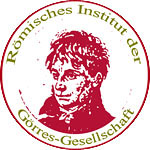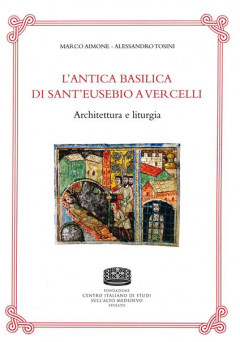Saint Peter en miniature: Marco Aimone about the early christian Basilica of Vercelli
Dr Marco Aimone from Vercelli, a member of the RIGG, has published an impressive study on the predecessor church of today's Vercelli Cathedral. The volume is the first, exemplary and now authoritative study of the early Christian and medieval church of Sant'Eusebio in Vercelli, northern Italy, and at the same time a fundamental contribution to the cultural and ecclesiastical history of the city in the first Christian centuries.
The ancient building, dedicated to St. Eusebius, was built in the 6th century as a martyr's church at the gates of Vercelli to keep the body of the first bishop of Vercelli. It was not until the 10th century that this church - instead of the previous cathedral of Santa Maria Maggiore - became an episcopal church. This church of S. Eusebio is then demolished for the Baroque cathedral. An illustration of the old Eusebian basilica can be found in the town view of Vercelli in the Theatrum Sabaudiae. Using previously unpublished drawings and documents, Aimone was able to prove that the early Christian basilica was conceived as a scaled-down but very faithful copy of St Peter's Basilica in the Vatican, which had been built two centuries earlier by Emperor Constantine. Today's Baroque cathedral, in turn, is a scaled-down copy of the Renaissance St. Peter's Basilica.
So you can see that there are highly interesting architectural references here between Vercelli and Rome, which Aimone describes and discusses in great detail. The background is undoubtedly the historical competition between the episcopal sees of Vercelli and Milan. In this context, Vercelli consciously oriented itself towards Rome. The book is therefore by no means a purely local historical study, but is of interest far beyond Vercelli.
A detailed review of the book will soon appear in the Römische Quartalschrift.
- Details
- Written by: Stefan Heid
- Category: Recommended reading
 Römisches Institut der Görres-Gesellschaft
Römisches Institut der Görres-Gesellschaft







